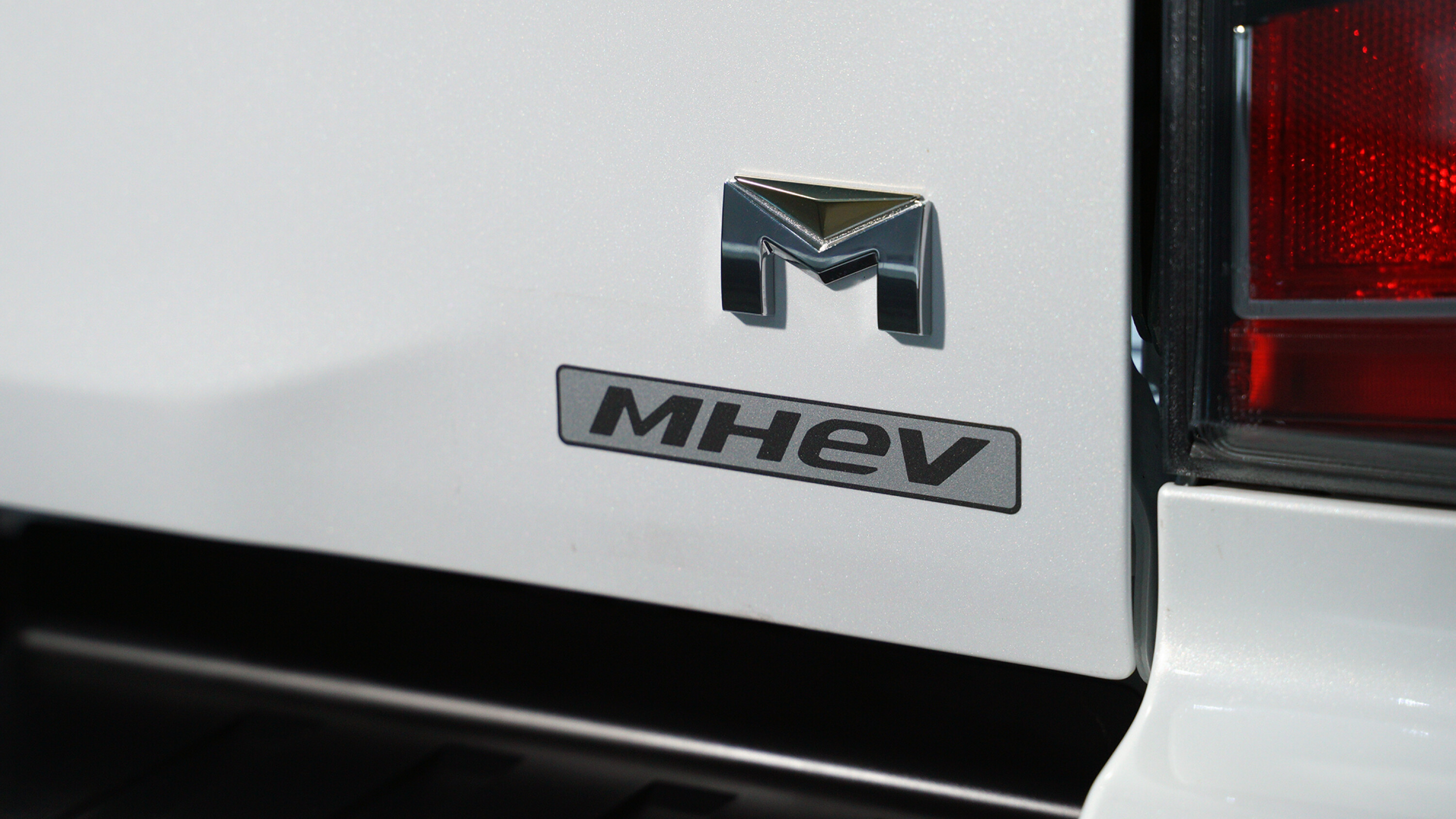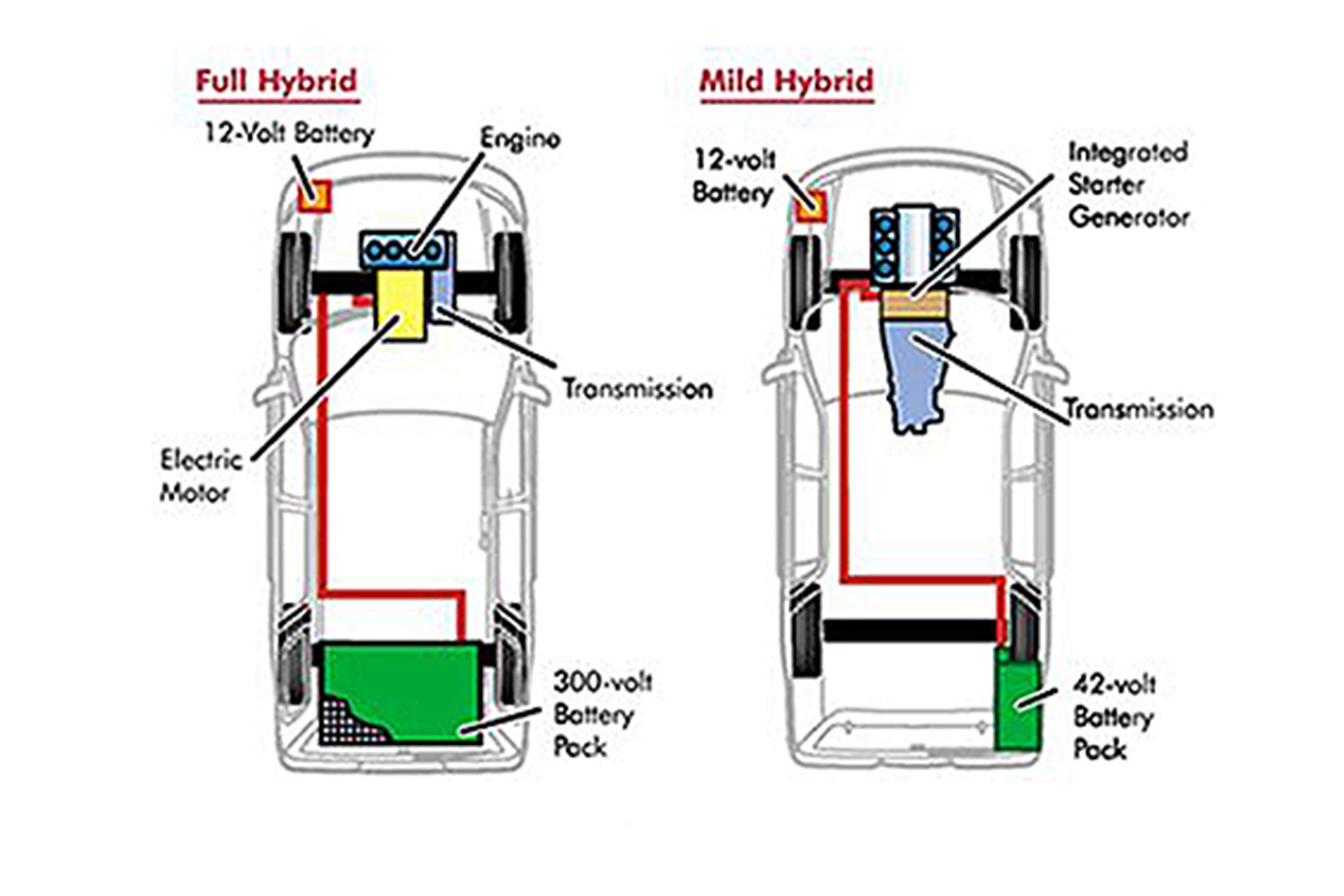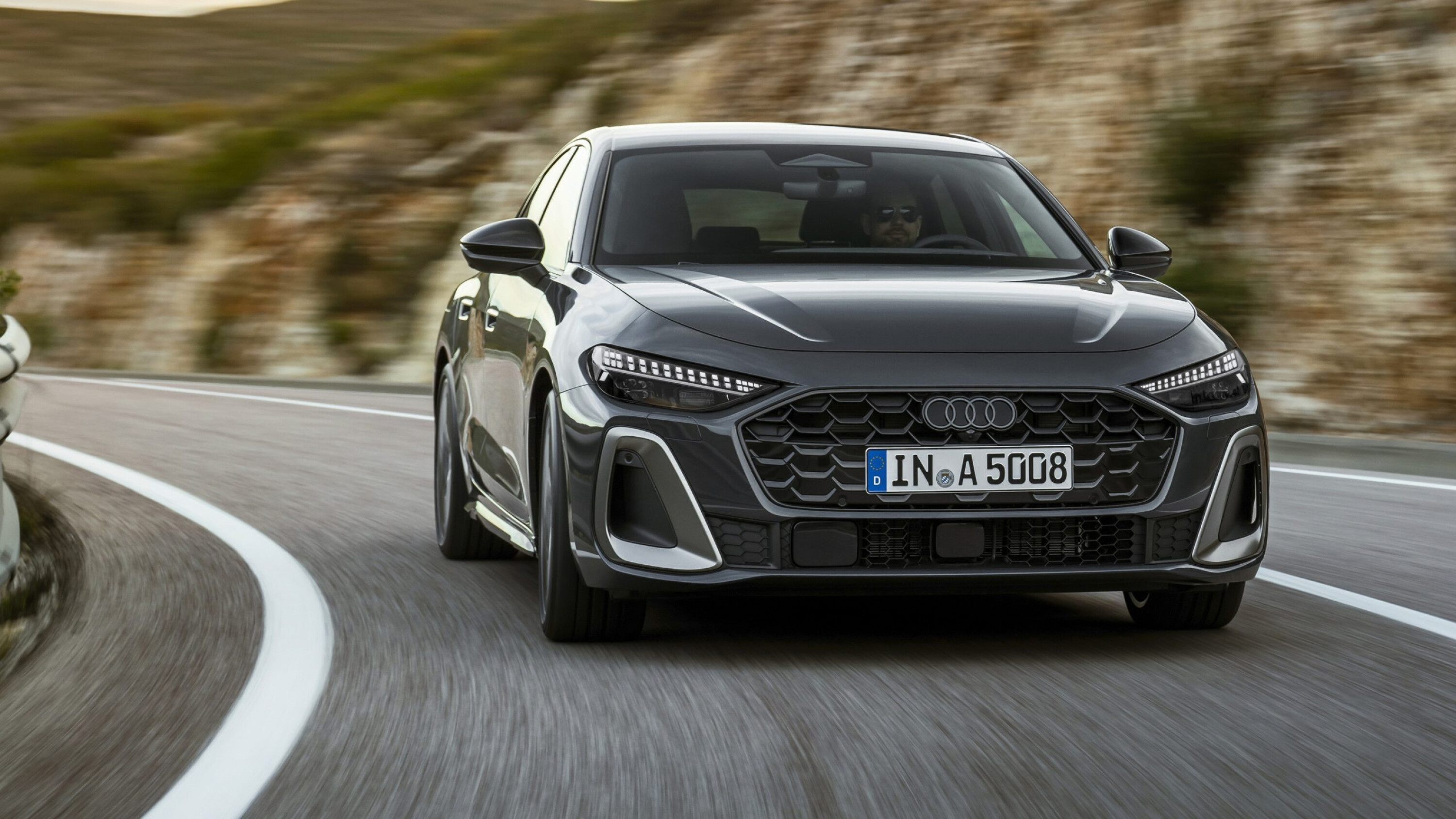
Mild hybrid systems are becoming increasingly popular among all manufacturers, but buyers may not fully understand the key differences between these ‘mild’ systems and the more conventional hybrid options.
By now, most people have a general understanding of, or are at least aware of, hybrid powertrains. But mild hybrid systems differ in that they’re a much simpler and cheaper way to reduce a car’s emissions output.
Mild hybrids, generously referred to as Mild Hybrid Electric Vehicles (MHEV) offer a practical bridge between traditional internal combustion engines (ICE) and fully electrified powertrains. They provide a sample of electrification without requiring plug-in charging, making them an accessible choice for many drivers.
How mild hybrids work
In a typical mild hybrid system, a small electric motor and a 48-volt battery supplement a petrol or diesel engine.
While full hybrids can operate on electric power alone at low speeds, mild hybrids cannot. Instead, the electric motor assists the engine, reducing fuel consumption and providing extra torque during acceleration. The system also powers certain vehicle functions, such as air conditioning, when the engine is off.

Key features of mild hybrid systems
Electric motor assist
- Offers additional torque during acceleration, easing the engineu2019s load and improving fuel efficiency.
Regenerative braking
- Captures energy during braking, storing it in the battery for later use to assist the engine.
Idle stop-start
- Automatically shuts down the engine when idling and restarts it seamlessly, saving fuel and reducing emissions.
Benefits of mild hybrids
Better fuel efficiency
- Mild hybrids typically deliver improved fuel economy compared to conventional ICE vehicles, thanks to electric assist and regenerative braking.
Lower emissions
- Reduced engine workload and idle stop-start functionality help decrease CO2 output.
Cost-effective technology
- Mild hybrid systems are simpler and less expensive than full hybrids, making them an attractive option for manufacturers and consumers alike.
Considerations
No electric-only driving
- Mild hybrids cannot run purely on electric power; the electric motor serves only as an assistive component.
Modest efficiency gains
- While fuel savings are notable, they are less substantial than those seen in full hybrids or electric vehicles.

Audi’s not-so-mild hybrid: MHEV Plus
While most mild hybrids use a single integrated starter-generator (ISG), Audi has taken a different approach with its MHEV Plus system, available in models like the new 2024 Audi A5 diesel and S5 turbo petrol performance model.
This advanced setup adds a second unit, a centrally mounted powertrain generator (PTG), making it unique in the MHEV market.
Enhanced regenerative braking: The MHEV Plus system can recuperate up to 25kW of energy during braking, significantly more than the typical 8kW seen in standard MHEVs.
Boosted torque and quick battery cycling: The system can deliver up to 18kW of power and 230Nm of torque, helping to fill torque gaps at low engine speeds. It also recharges and discharges the battery rapidly, allowing the engine to shut off more frequently.
Reduced reliance on friction brakes: The improved regenerative capability often provides enough deceleration without engaging the disc brakes, reducing wear.
Low-speed manoeuvring and coasting: Audi’s system allows for limited engine-off driving at low speeds and ‘surfing’ at moderate speeds (up to 80km/h) using only electric power.
This dual-generator approach is rare among mild hybrids, making Audi’s system an outlier. It showcases the potential for enhanced efficiency and performance without moving to a full hybrid or plug-in model.
The rise of mild hybrids in Australia
The popularity of mild hybrids is growing in Australia as automakers look for ways to improve fuel efficiency and meet stricter emissions standards.
While typical MHEVs offer incremental gains, innovations like Audi’s MHEV Plus show how the concept can be pushed further, providing features often reserved for more complex hybrid systems.
For buyers seeking improved economy without the need for charging infrastructure, mild hybrids represent a practical compromise.



